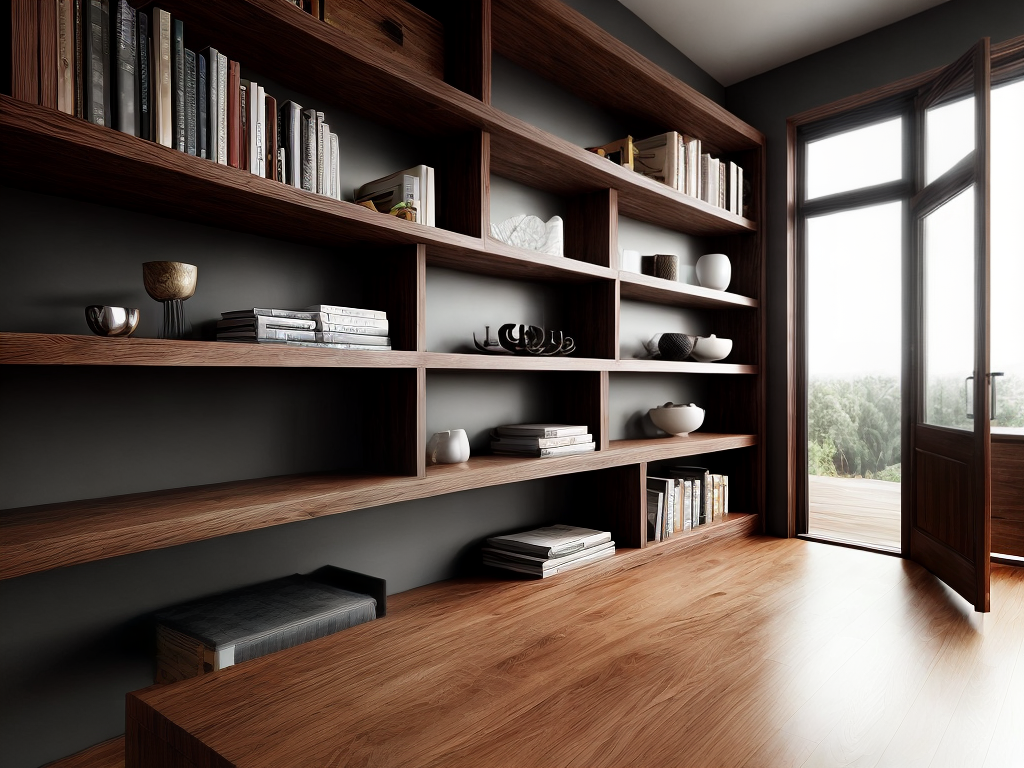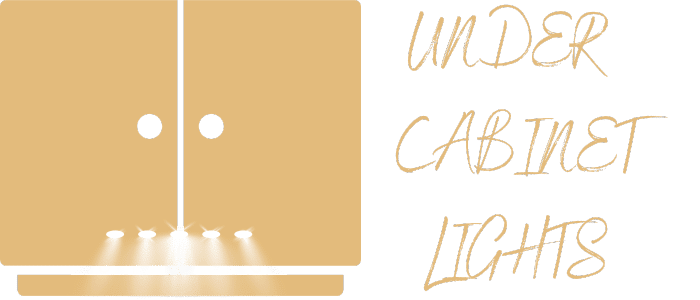
As I dive into the world of custom shelves, I begin to realize that choosing the right wood is like finding the perfect companion for my home. Material matters, and it’s crucial to select the wood that not only fits my style but also stands the test of time. In this guide, we will explore the key factors to consider when making this important decision. From durability and strength to aesthetics and style, we’ll uncover the secrets to creating shelves that not only belong in my space but also fulfill my practical needs. Join me on this journey as we discover the perfect wood that brings both beauty and functionality to our custom shelves.
Durability and Strength
When considering the durability and strength of the wood for my custom shelves, I rely on the information provided by experts and my own research. It is important to choose long lasting materials that will ensure the structural integrity of my shelves. I want my shelves to be sturdy and able to withstand the weight of books, decorations, and other items I plan to display. By selecting the right wood, I can ensure that my shelves will not only look great, but also stand the test of time. I look for wood species known for their strength, such as oak or maple, as these types of wood have proven to be reliable choices. Additionally, I make sure to check the wood’s moisture content and density, as these factors greatly influence its strength and durability.
Aesthetics and Style
To ensure the perfect aesthetic and style for my custom shelves, I rely on carefully selecting the wood that best complements my desired look and feel. With the wide variety of wood species and color options available, I can create a truly unique and personalized look for my shelves. Here are three key elements that I consider when choosing the wood for my custom shelves:
- Wood species: Each wood species has its own distinct characteristics and grain patterns, allowing me to choose the one that matches my desired style, whether it be rustic, modern, or traditional.
- Color options: From light tones like maple and birch to rich, dark hues like walnut and mahogany, the color options available in different wood species allow me to create the exact ambiance I want for my space.
- Grain patterns: The unique grain patterns in different wood species add depth and visual interest to my shelves, making them stand out as a true work of art in my home.
Cost-Effectiveness
When it comes to selecting the right wood for custom shelves, cost-effectiveness is a crucial factor to consider. One of the main points to keep in mind is opting for budget-friendly wood options that fit within your financial constraints. However, it is equally important to consider the long-term cost implications, such as durability and maintenance requirements, to ensure that you are making a wise investment. Ultimately, striking a balance between quality and price is key to achieving cost-effectiveness in your choice of wood for custom shelves.
Budget-Friendly Wood Options
I prefer using cost-effective wood options for my custom shelves. When it comes to creating beautiful and functional shelves without breaking the bank, there are several budget-friendly wood options to consider:
- Pine: Pine is a popular and affordable alternative for custom shelves. It has a natural light color and a straight grain, making it easy to work with and stain or paint to match any decor.
- Particleboard: Although not technically wood, particleboard is a cheap wood option that is often used for budget-friendly shelves. It is made from compressed wood particles and provides a smooth surface for painting or veneering.
- MDF: Medium-density fiberboard (MDF) is another cost-effective choice for custom shelves. It is made from wood fibers and resin, resulting in a smooth and uniform finish that is easy to paint.
Long-Term Cost Considerations
A crucial factor to consider when selecting the right wood for custom shelves is the long-term cost-effectiveness. While it may be tempting to go for cheaper options upfront, it is important to think about the long-term investment and the environmental impact of your choice. Investing in high-quality, sustainable wood may cost more initially but can save you money in the long run. Not only will durable wood require less frequent replacements, but it will also contribute to a more sustainable environment. To illustrate this point, let’s take a look at the table below, comparing the cost-effectiveness and environmental impact of different wood types over a 10-year period:
| Wood Type | Cost (Initial Investment) | Cost (Maintenance) | Environmental Impact |
|---|---|---|---|
| Option 1 | $200 | $50 | Moderate |
| Option 2 | $300 | $20 | Low |
| Option 3 | $400 | $10 | Negligible |
As you can see, while Option 1 may seem cheaper initially, the higher maintenance cost and moderate environmental impact make it less cost-effective in the long run. On the other hand, Option 3 may have a higher initial investment, but its low maintenance cost and negligible environmental impact make it the most cost-effective choice over time. So, when selecting the right wood for your custom shelves, it is important to consider the long-term cost-effectiveness and environmental impact to make a sustainable investment that will last for years to come.
Balancing Quality and Price
To achieve a balance between quality and price in selecting the right wood for custom shelves, it is essential to consider the cost-effectiveness of different options. When it comes to budget considerations during the wood selection process, here are a few factors to keep in mind:
- Durability: Opt for a wood species that is known for its strength and longevity. This way, you can save money in the long run by avoiding costly repairs or replacements.
- Maintenance: Choose a wood that requires minimal upkeep. This will not only save you time and effort but also reduce the need for expensive cleaning or refinishing products.
- Availability: Consider the availability and cost of the chosen wood species in your area. Opting for locally sourced or more commonly available woods can help you stay within your budget without compromising on quality.
Sustainability and Environmental Impact
When it comes to selecting the right wood for custom shelves, it’s important to consider sustainability and the environmental impact. One key aspect to look for is sustainable wood sources, such as those certified by organizations like the Forest Stewardship Council (FSC). By choosing wood from responsibly managed forests, we can help reduce our environmental footprint and support sustainable practices in the industry.
Sustainable Wood Sources
I have always been mindful of the environmental impact of my choices, so I prioritize using wood from sustainably managed sources for my custom shelves. When it comes to sustainable wood sources, there are a few eco-friendly options to consider:
-
Certified Forests: Look for wood that comes from certified forests, such as the Forest Stewardship Council (FSC) or the Sustainable Forestry Initiative (SFI). These certifications ensure responsible sourcing and forest management practices.
-
Reclaimed Wood: Using reclaimed wood is another great option. It reduces the demand for new trees to be cut down and gives new life to old materials.
-
Fast-Growing Species: Opt for fast-growing species like bamboo, which are known for their sustainability. They can be harvested quickly and replenished without causing significant harm to the environment.
Reducing Environmental Footprint
As an environmentally conscious individual, I consistently strive to minimize my environmental footprint when selecting the right wood for my custom shelves. One way I accomplish this is by considering the use of reclaimed wood. Reclaimed wood is sourced from old buildings, barns, or even shipping pallets, giving it a second life and reducing the need for new timber. Not only does this help preserve forests, but it also adds a unique character to my shelves with its weathered charm. Additionally, I explore eco-friendly alternatives such as bamboo or cork, which are fast-growing and sustainable options. By choosing these materials, I not only contribute to a healthier planet but also create a sense of belonging by aligning with a community of like-minded individuals who prioritize sustainability.
| Reclaimed Wood | Bamboo | Cork |
|---|---|---|
| Sourced from old buildings or pallets | Fast-growing and sustainable | Renewable and biodegradable |
| Preserves forests and reduces waste | Durable and versatile | Soft and warm texture |
| Adds unique character and charm | Low energy and water consumption | Excellent sound insulation properties |
Maintenance and Care
Maintaining and caring for custom shelves requires regular cleaning and occasional refinishing. To keep your shelves looking pristine and functional, here are some simple cleaning techniques and preventative measures to consider:
- Regular dusting: Use a soft cloth or duster to remove dust and debris from the surface of your shelves. This will prevent buildup and keep them looking fresh.
- Gentle cleaning solution: For stubborn stains or dirt, mix a mild soap or wood cleaner with warm water. Use a soft cloth or sponge to gently scrub the affected areas. Avoid abrasive cleaners that can damage the wood.
- Protective coatings: Applying a protective coating, such as varnish or wax, can help preserve the wood and prevent scratches and stains. Be sure to follow the manufacturer’s instructions for application.
Availability and Accessibility
When it comes to selecting the right wood for my custom shelves, I also consider the availability and accessibility of different types of wood. Wood selection plays a crucial role in achieving the desired aesthetic and functionality of my shelves. Being able to access the wood I need locally is important for several reasons. Firstly, it reduces transportation costs and ensures that the wood is readily available when I need it. Secondly, it allows me to support local businesses and contribute to the growth of my community. Lastly, local availability means that I can easily visit the supplier and personally inspect the wood for quality and suitability. By considering the availability and accessibility of different types of wood, I can make informed choices that align with my vision for my custom shelves.
Customization and Design Options
To explore the customization and design options for my custom shelves, I take into consideration the unique features and characteristics of different types of wood. When it comes to design flexibility, I have endless possibilities. I can choose from various wood grains, colors, and finishes to create a look that matches my personal style and complements my home decor. Additionally, I have the option to add unique details such as carved patterns or decorative edges, allowing me to truly personalize my custom shelves. With the wide range of personalization options available, I can create shelves that not only serve a practical purpose but also reflect my individuality and create a sense of belonging in my living space.
Conclusion
In conclusion, selecting the right wood for your custom shelves is crucial. Consider factors such as durability, aesthetics, cost-effectiveness, sustainability, maintenance, availability, and customization options. By carefully evaluating these aspects, you can ensure that your shelves not only meet your functional needs but also enhance the overall style and ambiance of your space. Make an informed decision to create shelves that are not only practical but also visually appealing and environmentally responsible.
